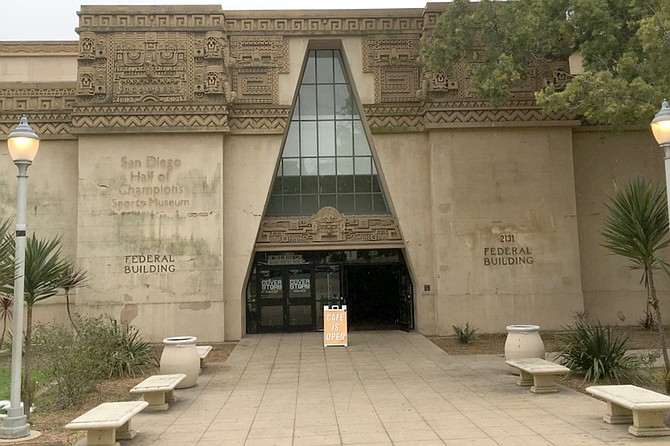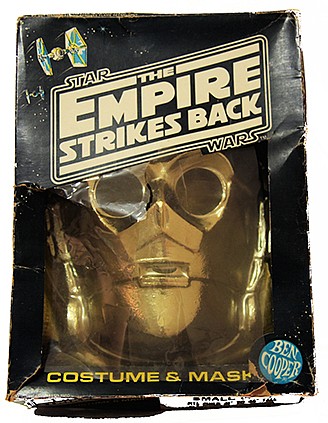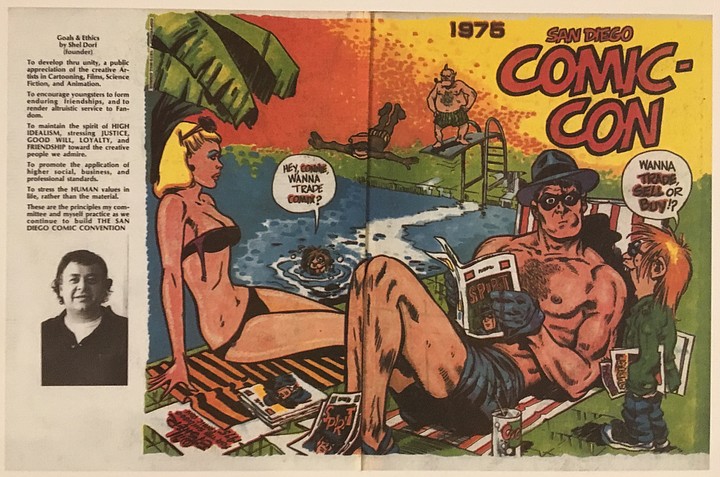 Facebook
Facebook
 X
X
 Instagram
Instagram
 TikTok
TikTok
 Youtube
Youtube

Comic-Con International’s WonderCon will be throwing open its doors on March 29 up in Anaheim, but the pop-culture juggernaut has something else in the offing — much smaller, but also much closer to home. This Saturday, from 10 am to 4 pm, the still-embryonic Comic-Con Museum in Balboa park will hold its very first art exhibit: Cover Story: the Art of Comic-Con 50. It’s a low-key, free-of-charge affair set up in the space that once housed the gift shop of the 68,000 square-foot building’s previous tenant, the San Diego Sports Museum.

The museum’s Executive Director, Adam Smith, says that the exhibit serves as both tribute and lead-up to the Con’s 50th anniversary this summer, but also helps people “understand the creative work of comic artists as something besides art that gets thrown away, the way a comic book usually is.” The gallery-lit walls of the space feature sketches and final versions of various Comic-Con program covers, including a 40th anniversary drawing by longtime Mad Magazine artist Sergio Aragones that “shows Comic-Con’s progression from the El Cortez hotel down to the Convention Center” via a massive crowed of peripatetic conventioneers and costumed comic-book heroes. The piece normally hangs in the museum’s offices, and Smith says he passed it every day. “But as soon as I saw it in that space,” under gallery lighting, “I looked at it in a different way. I started thinking about what Aragones was thinking when he made it. It transcended its status as just a work by a famous guy.” (And the exhibit does feature the work of some famous guys, at least from a comic fan’s standpoint: Jim Lee, who co-founded Image Comics, along with Bill Sienkiewicz, Frank Miller, etc.)

Almost more importantly, the exhibit works as a test case for the museum. “Comic-Con has always been a bottom-up organization,” says Smith. “It takes its energy from regular people and their passions — that’s the energy of popular culture. The Con operates on the model of, ‘Every event is a giant focus group for the next event.’ People vote with their feet, and you do more of what your audience is telling you to do. We are trying to translate that into a museum environment. A traditional museum would have a curator who decides what’s important and broadcasts that to the masses — and we’ll have some of that. But there are a massive number of pop-culture fans who already have great collections. We want to say to the them, ‘What ideas do you have?’ We want to serve not so much as curators as facilitators, creating experiences.”

By way of example, he describes a recent collaboration with Mike Becker, founder of Funko collectibles. “There’s a documentary about Funko on Netflix called Making Fun that I thought I should watch as part of my job. But I really connected with Becker’s values and passion: the success of that company comes from being connected to the mentality of the fans.” Smith got in touch with Becker, who lives in Coronado, and wound up doing a pop-up display of his “huge collection of Ben Cooper Halloween masks — those cheap throwaway masks you remember from when you were a kid. People got really nostalgic – ‘There’s the one I wore!’ – and it was a total validation of the concept.”
The pop-up aspect of the mask display is in keeping with Smith’s idea that “where a normal museum with seven spaces would do five or six as long-term or permanent and one or two as changing regularly, I think ours will be the reverse of that.” That tracks with his notion of the place as a kind of year-round Comic-Con, forever reading and responding to the will of the people. But both the gallery exhibit and the mask display are static, and Smith stresses that “the programming piece of what goes on here will be really strong. Comic-Con was never exclusively about comics. The first logo for Comic-Con had a film projector on it for a reason. We’re looking at the designs of theaters as much as we’re looking at designs of museums. Hall H at Comic-Con? It’s a big old theater.”

A test case for that aspect: in mid-February, the museum hosted two Disney comics artists, Patrick and Shelley Block, for a live, interactive comic creation session. The pair sat in front of an audience and took suggestions throughout the creation of a five-page comic, their progress projected on a screen. The audience got to watch a pro at work, and further, as Smith puts it, “by the end, there [was] a sense of pride and ownership, yielding an experience that we created together.”
There’s that “e” word again. “We’ve got a strong opportunity here,” says Smith, “because people in Balboa Park are in the right frame of mind with the right expectations about ‘what they’re going to do today.’” But beyond that, he says, “We’re working toward two museums in one: a daytime museum for tourists and families, and a nighttime museum that’s more of a community entertainment venue rooted in the program of Comic-Con. A place to get food and drink, watch a movie, attend a panel, do a hands-on class.” The space recently hosted a Star Wars: Armada table-top gaming tournament — “for hardcore players,” says Smith. “But we also had some demo activities, and the thing for us was how many people walked in from Balboa Park, with no marketing, and picked up the dice and started rolling and having fun. I think that’s a microcosm of what we’re trying to do.”
And as the film projector logo implies, some of that shared experience will involve watching stuff, whether straight-up or with an immersive twist. “There will be a movie theater; movies and film will be a big part of the vision. And not just film, but TV. If HBO would allow it, there would be massive number of people wanting to gather to watch Game of Thrones. Why are e-sports growing so rapidly, with people building 15,000-seat venues to watch video gaming together? Because it’s a shared experience of popular culture.”


Comic-Con International’s WonderCon will be throwing open its doors on March 29 up in Anaheim, but the pop-culture juggernaut has something else in the offing — much smaller, but also much closer to home. This Saturday, from 10 am to 4 pm, the still-embryonic Comic-Con Museum in Balboa park will hold its very first art exhibit: Cover Story: the Art of Comic-Con 50. It’s a low-key, free-of-charge affair set up in the space that once housed the gift shop of the 68,000 square-foot building’s previous tenant, the San Diego Sports Museum.

The museum’s Executive Director, Adam Smith, says that the exhibit serves as both tribute and lead-up to the Con’s 50th anniversary this summer, but also helps people “understand the creative work of comic artists as something besides art that gets thrown away, the way a comic book usually is.” The gallery-lit walls of the space feature sketches and final versions of various Comic-Con program covers, including a 40th anniversary drawing by longtime Mad Magazine artist Sergio Aragones that “shows Comic-Con’s progression from the El Cortez hotel down to the Convention Center” via a massive crowed of peripatetic conventioneers and costumed comic-book heroes. The piece normally hangs in the museum’s offices, and Smith says he passed it every day. “But as soon as I saw it in that space,” under gallery lighting, “I looked at it in a different way. I started thinking about what Aragones was thinking when he made it. It transcended its status as just a work by a famous guy.” (And the exhibit does feature the work of some famous guys, at least from a comic fan’s standpoint: Jim Lee, who co-founded Image Comics, along with Bill Sienkiewicz, Frank Miller, etc.)

Almost more importantly, the exhibit works as a test case for the museum. “Comic-Con has always been a bottom-up organization,” says Smith. “It takes its energy from regular people and their passions — that’s the energy of popular culture. The Con operates on the model of, ‘Every event is a giant focus group for the next event.’ People vote with their feet, and you do more of what your audience is telling you to do. We are trying to translate that into a museum environment. A traditional museum would have a curator who decides what’s important and broadcasts that to the masses — and we’ll have some of that. But there are a massive number of pop-culture fans who already have great collections. We want to say to the them, ‘What ideas do you have?’ We want to serve not so much as curators as facilitators, creating experiences.”

By way of example, he describes a recent collaboration with Mike Becker, founder of Funko collectibles. “There’s a documentary about Funko on Netflix called Making Fun that I thought I should watch as part of my job. But I really connected with Becker’s values and passion: the success of that company comes from being connected to the mentality of the fans.” Smith got in touch with Becker, who lives in Coronado, and wound up doing a pop-up display of his “huge collection of Ben Cooper Halloween masks — those cheap throwaway masks you remember from when you were a kid. People got really nostalgic – ‘There’s the one I wore!’ – and it was a total validation of the concept.”
The pop-up aspect of the mask display is in keeping with Smith’s idea that “where a normal museum with seven spaces would do five or six as long-term or permanent and one or two as changing regularly, I think ours will be the reverse of that.” That tracks with his notion of the place as a kind of year-round Comic-Con, forever reading and responding to the will of the people. But both the gallery exhibit and the mask display are static, and Smith stresses that “the programming piece of what goes on here will be really strong. Comic-Con was never exclusively about comics. The first logo for Comic-Con had a film projector on it for a reason. We’re looking at the designs of theaters as much as we’re looking at designs of museums. Hall H at Comic-Con? It’s a big old theater.”

A test case for that aspect: in mid-February, the museum hosted two Disney comics artists, Patrick and Shelley Block, for a live, interactive comic creation session. The pair sat in front of an audience and took suggestions throughout the creation of a five-page comic, their progress projected on a screen. The audience got to watch a pro at work, and further, as Smith puts it, “by the end, there [was] a sense of pride and ownership, yielding an experience that we created together.”
There’s that “e” word again. “We’ve got a strong opportunity here,” says Smith, “because people in Balboa Park are in the right frame of mind with the right expectations about ‘what they’re going to do today.’” But beyond that, he says, “We’re working toward two museums in one: a daytime museum for tourists and families, and a nighttime museum that’s more of a community entertainment venue rooted in the program of Comic-Con. A place to get food and drink, watch a movie, attend a panel, do a hands-on class.” The space recently hosted a Star Wars: Armada table-top gaming tournament — “for hardcore players,” says Smith. “But we also had some demo activities, and the thing for us was how many people walked in from Balboa Park, with no marketing, and picked up the dice and started rolling and having fun. I think that’s a microcosm of what we’re trying to do.”
And as the film projector logo implies, some of that shared experience will involve watching stuff, whether straight-up or with an immersive twist. “There will be a movie theater; movies and film will be a big part of the vision. And not just film, but TV. If HBO would allow it, there would be massive number of people wanting to gather to watch Game of Thrones. Why are e-sports growing so rapidly, with people building 15,000-seat venues to watch video gaming together? Because it’s a shared experience of popular culture.”
Comments